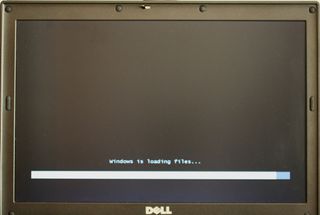WinPE Miscellany

Because you can load and run some GUI programs inside or on top of WinPE, you could conceivably add your favorite apps to the WinPE environment for an ultra-small runtime for use on a netbook, a PDA, or another limited-resource environment. Compact browsers such as Opera and QtWeb or file managers such as Salamander have been reported as working with WinPE, as has Windows Explorer itself (I find lots of evidence that people have made it work by importing it into program files on the image source, but I haven’t been able to make it work). Be that as it may, the WinPE image I built is about 240 MB, but can be trimmed to as little as half that (“Trim Your wim in Only Three Simple Steps,” blog on MSDN explains how).
You can also dual-boot between XP or Vista and WinPE, as this article explains. In short, there are lots of interesting things you can do with this toolset, once you become familiar with its workings.
Add WinPE/WinRE to Your Toolchest
While you may not be tempted to venture into some of the further-out reaches that these tools can tap, they’re still great to keep around for emergency boot and repair purposes. I have my own WinPE/WinRE UFD prepared now, and keep it in a special place. When one of my Vista machines needs an alternate boot, I can be up and running reasonably quickly. So can you!
Sign up to get the BEST of Tom’s Guide direct to your inbox.
Upgrade your life with a daily dose of the biggest tech news, lifestyle hacks and our curated analysis. Be the first to know about cutting-edge gadgets and the hottest deals.
Current page: The Benefits and Uses of Windows PE - Recap - Tom’s Guide
Prev Page How to Fix a Windows PC That Won’t Boot Up - Tom’s GuideEd Tittel is a freelance writer, trainer, and internet consultant. His work has appeared on many sites, including Tom's Guide, Tom's Hardware, TechTarget, and more. He has also contributed to multiple books, including the "For Dummies" series, where he wrote about HTML, HTML4, XHTML, XML, and CCS. He was also series editor of the Exam Cram books until 2005.
-
masterwhitman What, no mention of BartPE or UBCD4Win (Ultimate Boot CD for Windows)? These are two projects that are vastly superior to Microsoft's method (both are built on WinPE but have expanded capabilities) and are far easier to use.Reply -
when I saw this I thought it was going to be a review of Bart's PEBuilder... It's saved my a$$ many times. Far superior to WinPE...Reply
How about a comparison/companion article? or an article on tools gearheads & techies find indespensible? -
average joe Vista's PE is far more advanced than XP's. The BartPE project is based of XP's PE. Barts is amazingly useful and I can't wait till they move to from PE 1.1 to PE 2.0.Reply
Some "fairly new" systems will not boot from usb so always carry a cd version as a backup. -
"I usually grab Imagex.exe and the Package Manager using the commands shown in the next screen capture."Reply
Hmmm... I don't see a 'next screen capture' showing the commands used to get imagex and Package Manager. -
LightWeightX Good start to the guide until you get to the WinRE. In section 5, step 2, you describe using imagex and the secret is the number 2 argument however you do not give an example of the command. In the WinPE you use a 240 MB partition, then in WinRE you state you need at least 512 MB.Reply -
sdybas Show us howto "use imagex to grab the Windows RE image from the Vista-installation media." Thanks.Reply -
Good article, but it makes a few omissions and goofs here and there.Reply
1. For using imagex to grab the WinRE image, check out this link:
http://blogs.msdn.com/winre/archive/2006/12/12/creating-winre-using-waik.aspx
2. "x64" won't work when you're using copype.cmd - it has to be "AMD64". Just replace all instances of x64 with AMD64 in this procedure, and it'll work.
3. For the image showing how to grab imagex and the package manager, click on the picture above the text to open up the gallery, then click one pic forward.
